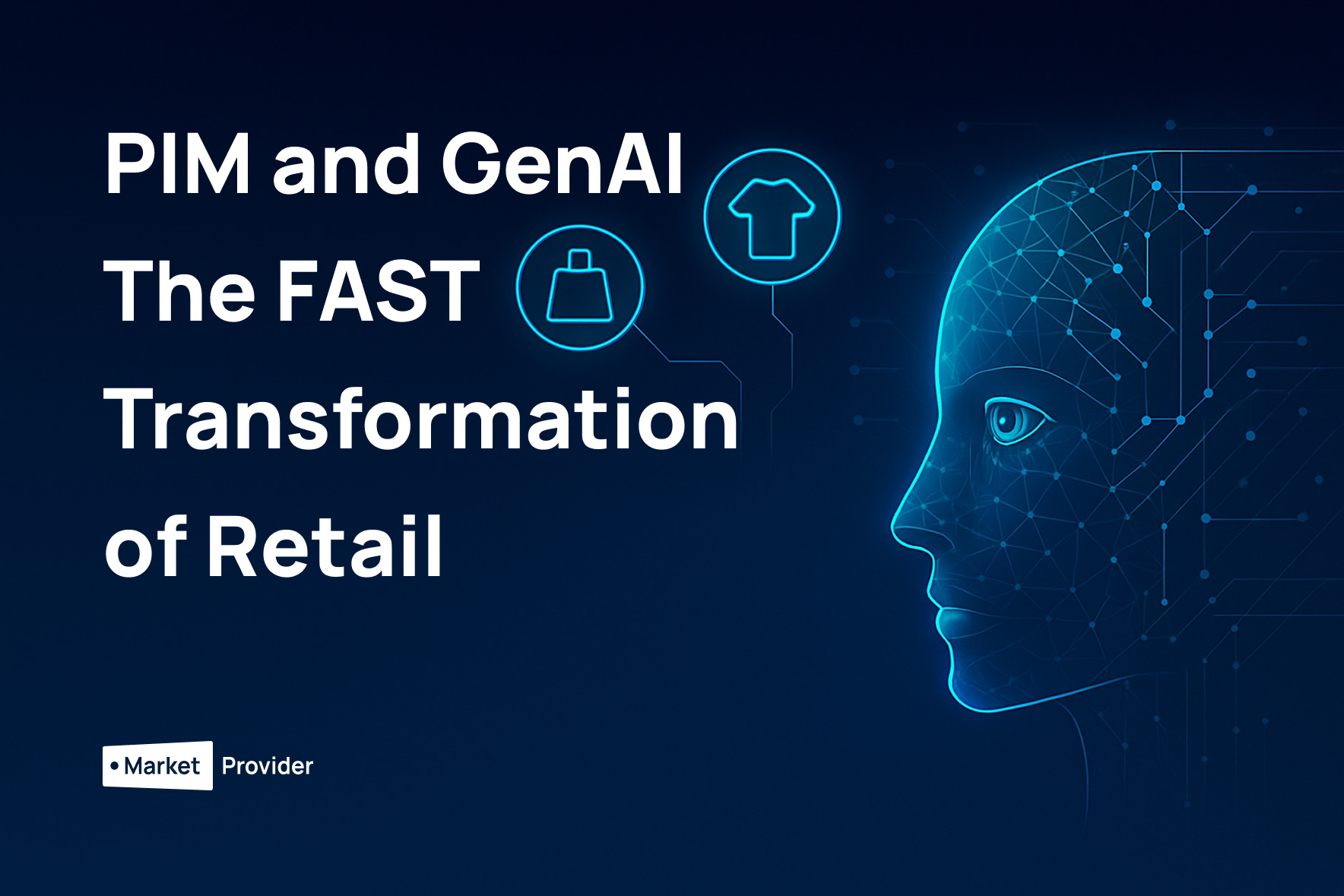According to IDC, a leading analytical company, 50% of retailers in the Asia/Pacific region will be actively using Generative AI (GenAI) for product content creation by 2027. This isn't just a technological trend; it's a strategic move that will reduce operational costs by 30% and significantly boost conversion rates.

However, to leverage this advantage, retailers must prepare their digital infrastructure. The key component of this preparation is a PIM (Product Information Management) system. A PIM is no longer just a data storage tool; it's a critical foundation upon which the entire GenAI strategy is built. In this article, we'll explore how a PIM system ensures success in this new era of retail.
Retail continues to evolve.
We have already moved beyond the omnichannel phase, integrating digital and physical channels, and entered the era of digital transformation, driven by mobile technologies and artificial intelligence. Today marks the beginning of a new chapter - the FAST transformation: a path toward retail that is Future-ready, Autonomous, Scalable, and Trusted.
The driving forces behind this transformation are Generative AI and Intelligent Edge Computing. These technologies empower retailers to:
- Be future-ready. By creating personalized content and product design using GenAI;
- Become autonomous. By automating routine tasks and freeing up resources for strategic initiatives;
- Scale without limits. By adapting systems and processes to the growing demands of the business;
- Earn customer trust. By ensuring reliability, transparency, and data protection at every touchpoint.
FAST is not just an acronym - it is a new strategic paradigm that defines what the retail of tomorrow will look like.
The Role of GenAI in the New Retail Reality
IDC predicts that GenAI will transform retail across several key areas:
- Cost Reduction and Increased Efficiency. By 2026, 40% of retailers will reduce labor costs by 2% by embedding GenAI into core business processes like content creation. This automates routine tasks, allowing employees to focus on higher-value activities.
- Flexible, Cross-Compatible Models. By 2026, 90% of retail tools will have embedded AI algorithms. This means GenAI models will integrate into existing systems, making them flexible and compatible.
- Personalization and Customer Loyalty. By 2027, 50% of retailers will implement AI-driven loyalty applications that create contextualized offers. This will boost customer engagement and increase retention by up to 25%.
However, success in all these areas directly depends on the quality and accessibility of the data that GenAI uses and learns from. This is where a PIM system comes in.
PIM - The Foundation for GenAI Transformation
GenAI is a powerful tool, but its effectiveness is directly tied to the "raw material" it receives. If product data is incomplete, inaccurate, or scattered, GenAI will generate low-quality content, leading to increased costs and reduced conversion. A PIM system solves this problem by acting as the Single Source of Truth for all product data.
How PIM Ensures Synergy with GenAI:
- Centralized Data Management. A PIM system collects and standardizes all product information from various sources. This ensures the data is complete and up-to-date, which is essential for training GenAI.
- Content Enrichment. PIM allows you to add rich content to products, such as images, videos, 3D models, and detailed technical specifications. GenAI can use this data to create more detailed and engaging descriptions.
- Version and Localization Management. A PIM system can store product information for different sales channels and regions. GenAI can then use this data to automatically localize content, adapting it to the nuances of local markets.
- Process Automation. A PIM system automates the transfer of product data to various platforms, from marketplaces to websites. GenAI, in turn, can automate the creation of content for these platforms, streamlining the entire process.
Practical Examples of PIM and GenAI Synergy
Let's look at how a PIM system and GenAI can work together to solve real business challenges:
- Faster Time-to-Market. A retailer receives a new shipment of products. Instead of manually creating descriptions and assigning attributes for hundreds of items, the PIM system automatically standardizes the data, and GenAI uses this data to generate unique copy for each product card. As a result, a process that once took weeks can now be completed in a matter of hours.
- Personalized Content. GenAI can create personalized product descriptions for each customer, taking into account their purchase history, preferences, and location. The PIM system, in turn, provides GenAI with access to the complete and accurate data needed for this personalization.
- Cost Optimization. GenAI can create hundreds of product descriptions, saving copywriters' time and resources. The PIM system ensures the data quality needed for GenAI to work without errors and minimize the need for manual corrections.
Achieving FAST Transformation with Marketprovider
A PIM system is not just a data repository, it's a strategic tool that helps retailers adapt to change and stay competitive. In the GenAI era, a PIM system becomes a critical part of the digital infrastructure, providing GenAI with the high-quality data needed to create content, reduce costs, and increase customer loyalty.
Marketprovider's proprietary PIM system is designed to help you prepare for the future of retail. Our system provides complete control over your data, simplifies management, and automates delivery to all sales channels. In doing so, we create the perfect foundation for successful GenAI implementation and the transition to FAST transformation.